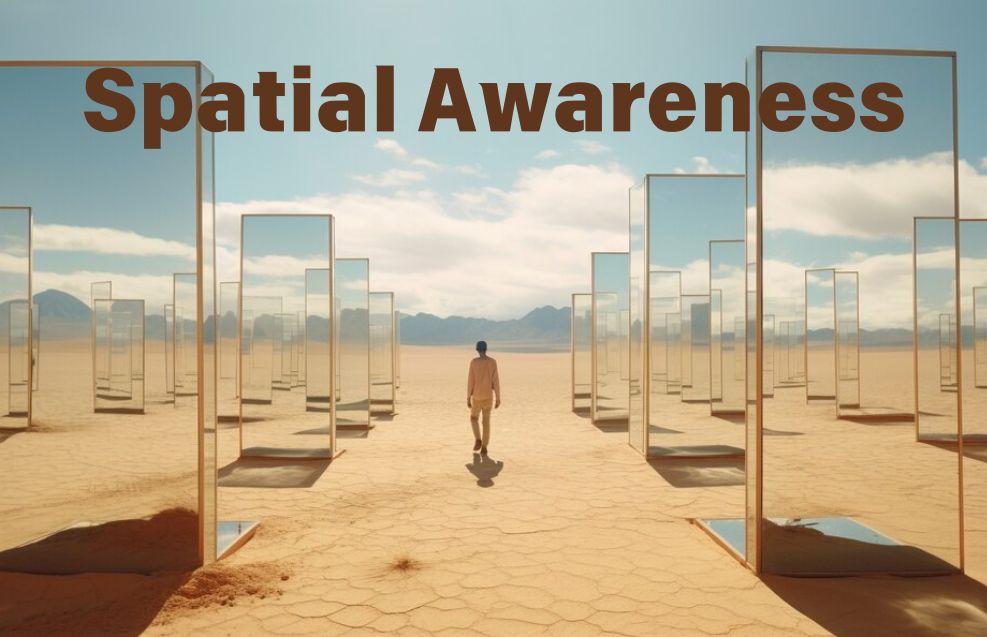Spatial awareness is a fundamental yet often overlooked skill that permeates every aspect of our daily lives. From navigating through crowded streets to placing a mug back on a kitchen shelf without looking, spatial awareness allows us to interact seamlessly with our environment. But what exactly makes this awareness so crucial, and how does it influence our behaviors, decisions, and even our sense of identity? Let’s dive deeper into its multifaceted impact.
The Neuroscience Behind Spatial Awareness
Spatial awareness refers to the ability to understand and process the position of objects in relation to ourselves and each other. This skill is governed by complex neural networks, primarily involving the parietal lobe, which integrates sensory information to form a coherent understanding of our surroundings. For instance, when catching a ball, your brain processes the object’s speed, distance, and trajectory to anticipate where it will land—all thanks to spatial awareness.
In addition to the parietal lobe, the cerebellum and motor cortex also play significant roles. The cerebellum fine-tunes motor movements, while the motor cortex plans and executes those actions. This intricate collaboration ensures that our movements are not just functional but also efficient and precise.
Real-World Applications of Spatial Awareness
Spatial awareness isn’t limited to extraordinary feats; it’s embedded in countless everyday tasks. Here’s how it manifests across various domains:
- Driving and Navigation: Whether you’re maneuvering through traffic or parallel parking, this awareness helps you judge distances and avoid collisions. Advanced spatial awareness also enhances your ability to read maps or rely on GPS directions without missing a turn.
- Sports and Physical Activities: In sports, athletes rely heavily on this awareness to gauge distances, anticipate opponents’ moves, and execute precise actions. A basketball player assessing the best angle for a shot or a soccer player passing the ball to a teammate exemplifies spatial awareness in action.
- Design and Architecture: Architects and interior designers use spatial awareness to create functional and aesthetically pleasing spaces. From aligning furniture to ensuring proper circulation flow, their work is a testament to the practical applications of this skill.
- Parenting and Childcare: Parents often use spatial awareness instinctively. Whether it’s baby-proofing a room or ensuring a toddler’s safety while playing, this awareness becomes an essential tool for caregivers.
Enhancing Spatial Awareness
Although spatial awareness comes naturally to most, it can be improved through targeted practices and activities. Here are some strategies to hone this crucial skill:
- Engage in Physical Activities: Activities like yoga, dance, or martial arts improve body awareness and spatial orientation. These practices require you to coordinate movements while being mindful of your surroundings.
- Play Spatial Games: Games such as Tetris, puzzles, or even video games that involve navigating virtual environments can enhance spatial reasoning skills.
- Practice Mindful Observation: Cultivate the habit of observing your environment in detail. For example, take a moment to note the arrangement of objects on your desk or the layout of a room.
- Explore New Routes: Taking unfamiliar paths challenges your brain to create new spatial maps, improving your navigation skills and overall spatial awareness.
- Use Augmented Reality (AR) Tools: AR tools and applications offer interactive ways to practice this awareness. From virtual home decor apps to immersive gaming, these tools help refine your ability to visualize spaces and objects.
The Role of Spatial Awareness in Communication
Interestingly, this awareness also impacts interpersonal communication. Proxemics, the study of personal space, illustrates how people’s sense of spatial boundaries affects social interactions. For instance, standing too close to someone during a conversation may feel intrusive, while maintaining an appropriate distance fosters comfort and rapport. Understanding and respecting these spatial cues can significantly enhance social interactions.
Spatial Awareness and Mental Health
A lesser-known but important aspect of spatial awareness is its connection to mental well-being. Disruptions in this awareness, often seen in conditions like ADHD, autism spectrum disorder, or traumatic brain injuries, can affect daily functioning and self-confidence. Rehabilitation therapies focusing on spatial skills can lead to significant improvements in these individuals’ quality of life.
Moreover, engaging in activities that enhance the awareness, such as mindful walking or structured exercise routines, can alleviate stress and promote mental clarity. This highlights the therapeutic potential of cultivating this awareness in both clinical and non-clinical settings.
The Future of Spatial Awareness in Technology
The advent of technology has ushered in new ways to harness and enhance this awareness. Virtual reality (VR) and augmented reality (AR) are transforming how we interact with spatial dimensions. For instance:
- Education: VR simulations offer immersive learning experiences, from exploring historical landmarks to practicing surgical procedures.
- Healthcare: AR tools assist surgeons in visualizing anatomical structures during operations, enhancing precision and reducing risks.
- Gaming: Advanced gaming systems use this awareness to create more engaging and realistic experiences, pushing the boundaries of virtual environments.
Common Challenges in Spatial Awareness
Despite its importance, many people face challenges in this awareness. Common difficulties include:
- Navigational Issues: Some individuals struggle with directional sense, finding it hard to orient themselves in unfamiliar environments.
- Motor Coordination Problems: Poor hand-eye coordination can make tasks like catching a ball or using tools challenging.
- Difficulty with Spatial Relationships: This can manifest as trouble judging distances or arranging objects efficiently, often observed in learning disabilities like dyslexia.
For those experiencing these challenges, targeted interventions such as occupational therapy, cognitive training, and physical exercises can be beneficial.
Conclusion
Spatial awareness is far more than just a practical skill; it’s a cornerstone of how we interact with the world and each other. From ensuring safety in daily activities to fostering meaningful social connections and even enhancing technological innovations, the awareness remains indispensable. By understanding its nuances and actively working to improve it, we can unlock new levels of efficiency, creativity, and well-being in our lives.
So the next time you seamlessly navigate through a crowded room or align your furniture perfectly in a new apartment, take a moment to appreciate the silent, ever-present power of this awareness.

